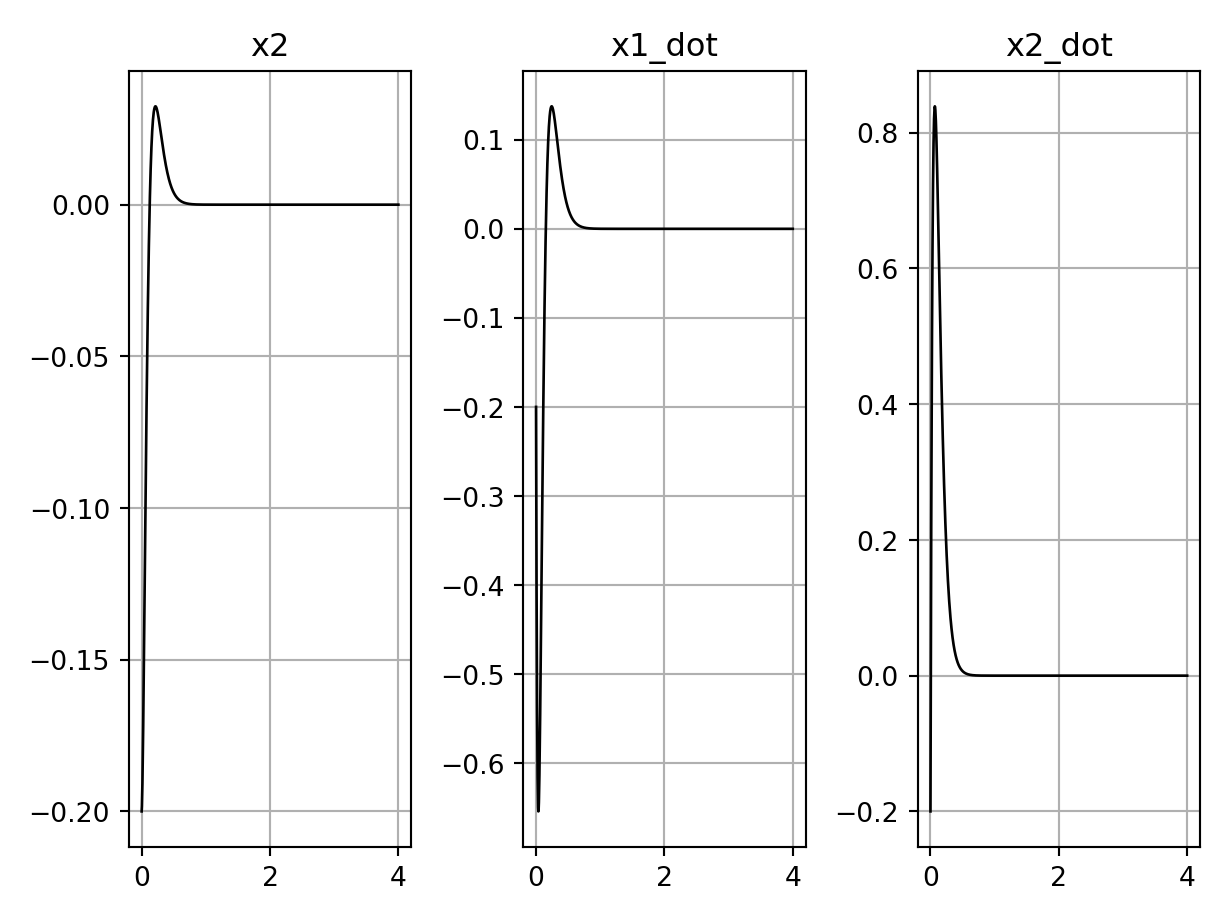Automatic Control Knowledge Repository
You currently have javascript disabled. Some features will be unavailable. Please consider enabling javascript.Details for: "reduced observer design"
Name: reduced observer design
(Key: AZFKT)
Path: ackrep_data/problem_solutions/reduced_observer_two_mass_floating_bodies View on GitHub
Type: problem_solution
Short Description:
Created: 2020-12-30
Compatible Environment: default_conda_environment (Key: CDAMA)
Source Code [ / ] solution.py
Solved Problems: design of the reduced state observer to estimate of the unknown internal state of a given real system |
Used Methods: system proporty method_trajectory_planning
Result: Success.
Last Build: Checkout CI Build
Runtime: 3.7 (estimated: 10s)
Plot:

The image of the latest CI job is not available. This is a fallback image.
Path: ackrep_data/problem_solutions/reduced_observer_two_mass_floating_bodies View on GitHub
Type: problem_solution
Short Description:
Created: 2020-12-30
Compatible Environment: default_conda_environment (Key: CDAMA)
Source Code [ / ] solution.py
#!/usr/bin/env python3
# -*- coding: utf-8 -*-
"""problem solution : using reduced observer to estimate states which
not belong to the outputs of the two-mass system
"""
import numpy as np
import sympy as sp
import matplotlib.pyplot as plt
import method_observer_full_reduced as ofr # noqa
import method_system_property as msp # noqa
import os
from ackrep_core.system_model_management import save_plot_in_dir
class SolutionData:
pass
def solve(problem_spec):
"""solution of reduced observer
the design of a linear full observer is based on a linear system.
therefore the non-linear system should first be linearized at the beginning
:param problem_spec: ProblemSpecification object
:return: solution_data: states and output values of the system
"""
sys_f_body = msp.System_Property() # instance of the class System_Property
sys_f_body.sys_state = problem_spec.xx # state of the system
sys_f_body.tau = problem_spec.u # inputs of the system
# original nonlinear system functions
sys_f_body.n_state_func = problem_spec.rhs(problem_spec.xx, problem_spec.u)
# original output functions
sys_f_body.n_out_func = problem_spec.output_func(problem_spec.xx, problem_spec.u)
sys_f_body.eqlbr = problem_spec.eqrt # equilibrium point
# linearize nonlinear system around the chosen equilibrium point
sys_f_body.sys_linerazition()
tuple_system = (sys_f_body.aa, sys_f_body.bb, sys_f_body.cc, sys_f_body.dd) # system tuple
yy_f, xx_f, tt_f, sys_f = ofr.reduced_observer(
tuple_system, problem_spec.poles_o, problem_spec.poles_cl, problem_spec.xx0, problem_spec.tt, debug=False
)
solution_data = SolutionData()
solution_data.yy = yy_f
solution_data.xx = xx_f
save_plot(problem_spec, solution_data)
return solution_data
def save_plot(problem_spec, solution_data):
titles = ["x1", "x2", "x1_dot", "x2_dot"]
for i in range(4):
plt.subplot(2, 2, i + 1)
plt.plot(problem_spec.tt, solution_data.xx[:, i], color="k", linewidth=1)
if i >= 1:
plt.plot(problem_spec.tt, solution_data.yy[:, i - 1], "r--", linewidth=1)
plt.grid(1)
plt.title(titles[i])
if i < 2:
plt.ylabel("position m")
else:
plt.ylabel("velocity m/s")
plt.tight_layout()
# plotting the error between true value and estimated value
# with initial errors
titles2 = ["x2", "x1_dot", "x2_dot"]
plt.figure(2)
for i in range(3):
plt.subplot(1, 3, i + 1)
plt.plot(problem_spec.tt, solution_data.xx[:, i + 1] - solution_data.yy[:, i], color="k", linewidth=1)
plt.grid(1)
plt.title(titles2[i])
plt.tight_layout()
# save image
save_plot_in_dir()
Solved Problems: design of the reduced state observer to estimate of the unknown internal state of a given real system |
Used Methods: system proporty method_trajectory_planning
Result: Success.
Last Build: Checkout CI Build
Runtime: 3.7 (estimated: 10s)
Plot:

The image of the latest CI job is not available. This is a fallback image.